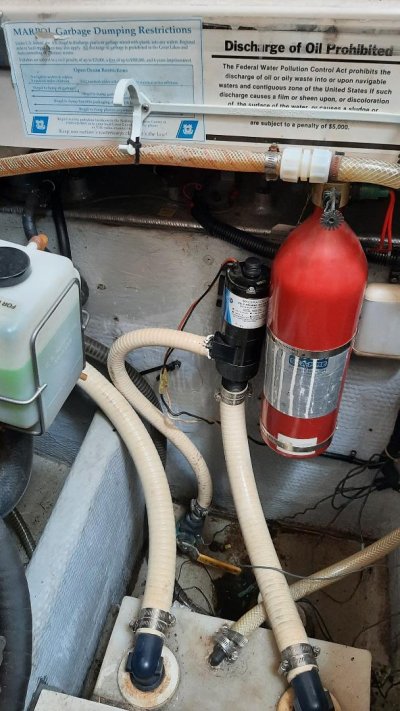kthoennes
Guru
- Joined
- Oct 11, 2013
- Messages
- 2,474
- Location
- USA
- Vessel Name
- Xanadu
- Vessel Make
- Mainship 37 Motor Yacht
Silly me, nothing is ever quick and easy. So I'm replacing the macerator pump. As long as I'm down there, I figure I might as well replace at least the easily-accessed sanitation hoses too, since the old hose is getting stiff and started to tear easily when I tried to pry it off the old pump. Photo of the area below. I know there's a seacock at the thru-hull which we normally always keep closed, but shouldn't there still be a vented loop in that discharge hose between the pump and the thru-hull? The top edge of the photo is the salon floor. The waterline is roughly even with the top of that big gray stringer you can see on the left side. Shouldn't I at least run the new hose up as close to the underside of the salon floor as I can, and install an anti-siphon valve at the top? (I searched the forum for this same question but didn't find an answer directly on point.) I know we don't heel over like a sailboat, but that hose and pump height always made me a little uneasy. Thanks.
(Yes, I need to tidy up the sump pump wiring and properly mount the float switch, that's a work in progress too.)
(You can also see where the vent filter cartridge used to be. Peggy was right of course, removing the cartridge and opening up some unrestricted airflow fixed a persistent odor problem.)
View attachment 120029
(Yes, I need to tidy up the sump pump wiring and properly mount the float switch, that's a work in progress too.)
(You can also see where the vent filter cartridge used to be. Peggy was right of course, removing the cartridge and opening up some unrestricted airflow fixed a persistent odor problem.)
View attachment 120029

